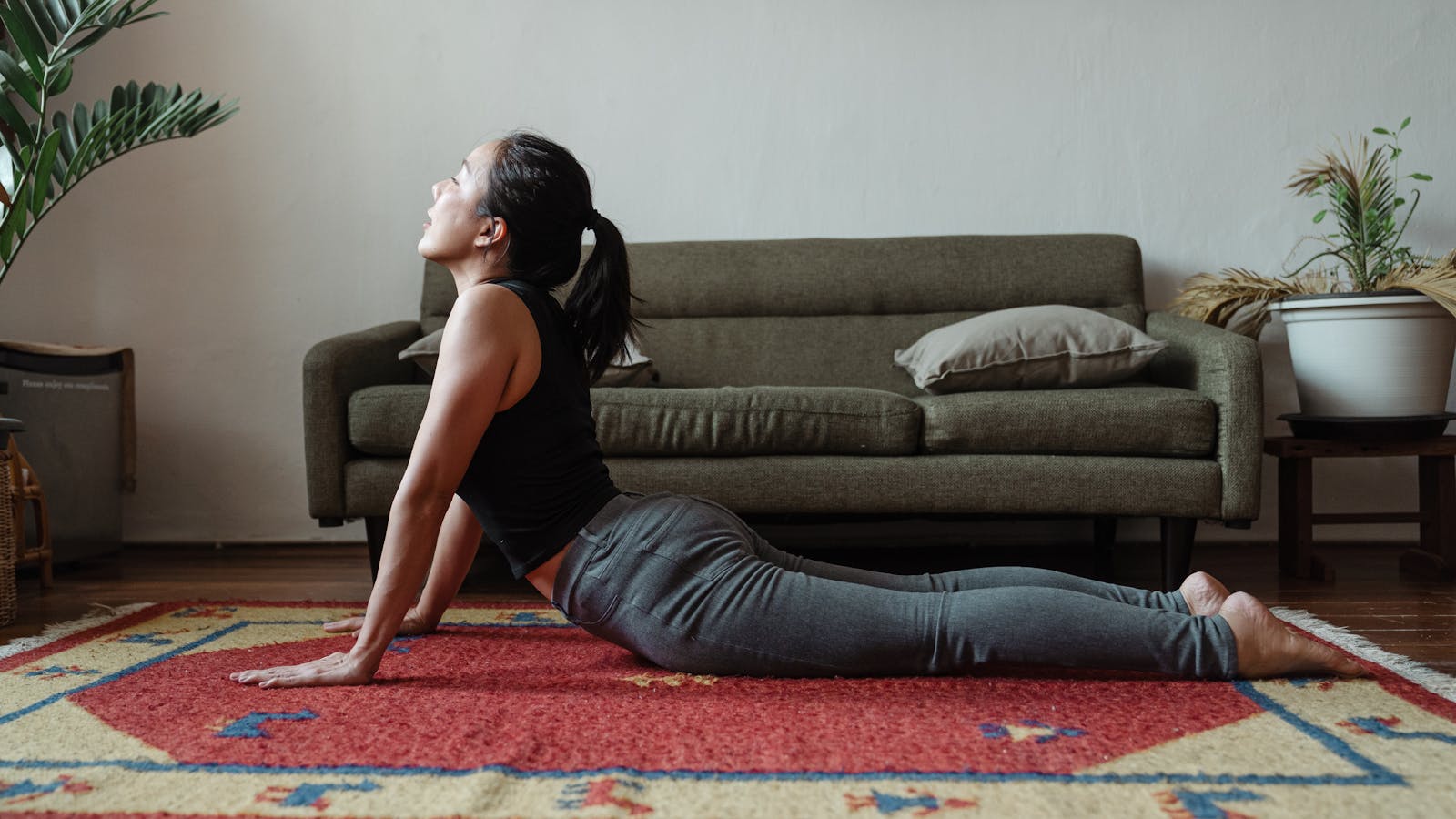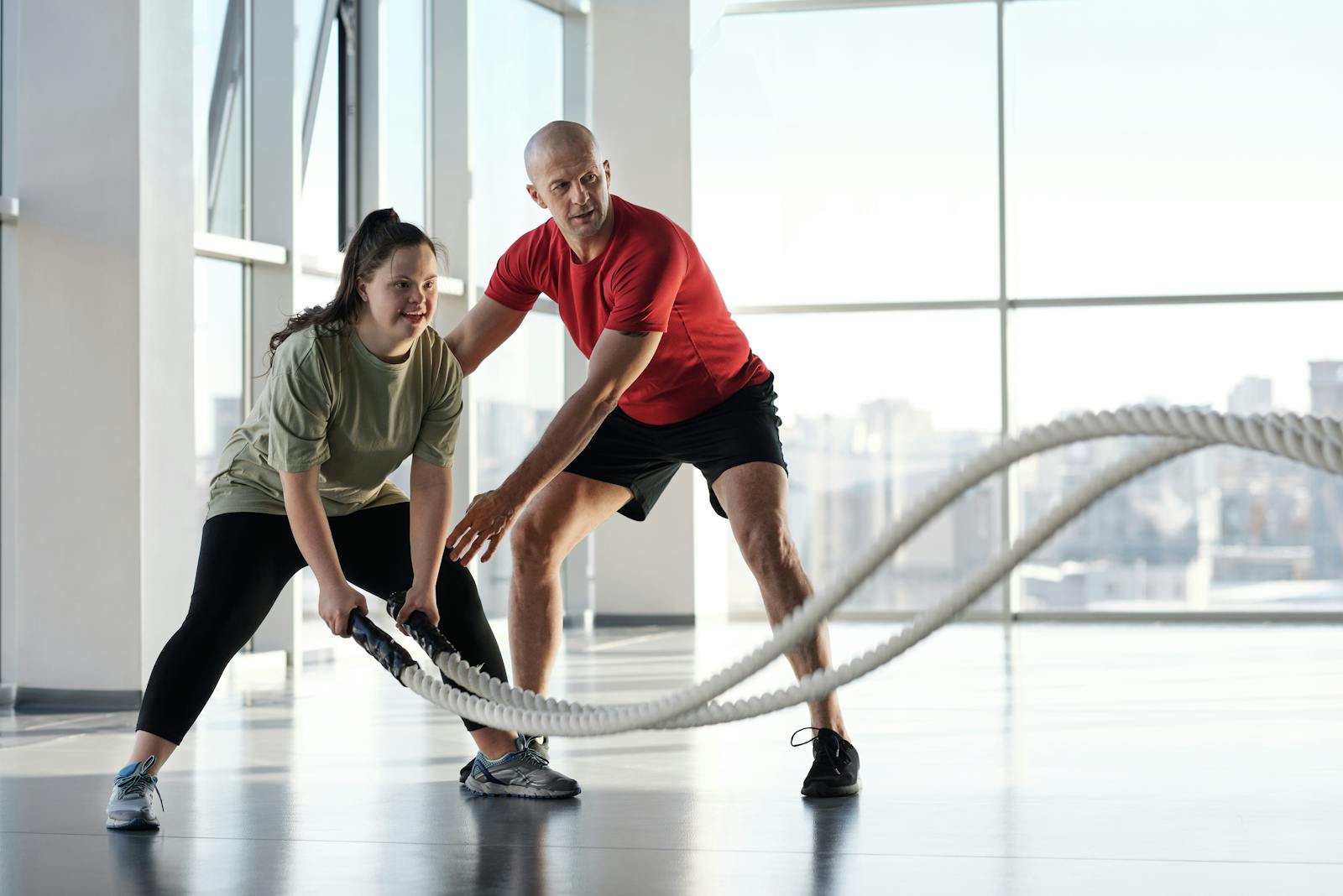Physical therapy has emerged as a cornerstone in managing lower back pain, a condition affecting a significant number of adults worldwide. This rehabilitative discipline, focusing on strength, flexibility, and body mechanics, can play a pivotal role in mitigating pain, enhancing mobility, and improving quality of life. As we explore the intricacies of this non-invasive, drug-free approach, one may wonder: could the key to sustainable relief from lower back pain lie in the expert hands of physical therapists and the tailored exercise routines they prescribe?
Understanding Lower Back Pain
Grasping the complexity of lower back pain is essential, as it is a pervasive issue that hinders the daily activities of countless individuals around the globe. This discomfort often stems from various sources, two of which include sciatica and degenerative disc disease.
Understanding sciatica begins with acknowledging its origin. It primarily occurs when the sciatic nerve, the longest nerve in the body, becomes irritated or compressed at the lower spine. This condition often results in pain that radiates from the lower back down through the legs. It’s important to note that while the pain can be severe, most people recover from sciatica with non-operative treatments.
On the other hand, degenerative disc disease is a condition usually associated with aging. As we age, our intervertebral discs lose their flexibility, elasticity, and shock-absorbing characteristics. Consequently, these discs may bulge or rupture, causing lower back pain. While it sounds menacing, this disease is relatively common and treatment options are available.
Causes of Lower Back Pain
Lower back pain can stem from a variety of sources, making it an issue that demands careful examination. A common cause can be traced to everyday behaviors such as poor posture and certain physical activities. Let’s turn our attention to these triggers and explore how they contribute to lower back discomfort.
Identifying Common Pain Triggers
In the domain of lower back pain management, understanding common triggers is an essential step towards effective treatment. Pain perception factors play a significant role in how individuals experience discomfort, with some people being more susceptible than others due to physical and psychological differences. Emotional stress impact is another critical element, as heightened stress levels can exacerbate pain and limit the body’s ability to heal effectively. It is important to note that these triggers are not isolated occurrences, but often interlinked, creating a complex web of pain inputs that need careful management. Identifying these triggers allows health professionals to devise an effective treatment plan, thereby paving the way to a successful recovery and improved quality of life.
Impact of Poor Posture
While it may seem innocuous, maintaining poor posture over prolonged periods is a pivotal cause of lower back pain, as it places undue stress on the back muscles and spinal structures. The strain from slouching or hunching, especially during work hours, can result in persistent discomfort, muscle fatigue, and even degenerative issues over time. Ergonomic workspaces, designed to promote good posture and reduce the risk of musculoskeletal disorders, can be beneficial in mitigating these problems. Additionally, the use of posture correction devices can further assist in aligning the spine and encouraging proper posture. It is essential to understand that poor posture doesn’t just affect aesthetics; it’s a silent contributor to lower back pain and can substantially impact overall health and well-being.
Role of Physical Activity
Physical activity, particularly when performed incorrectly or excessively, plays a significant role in the onset of lower back pain. Activity types can vary in intensity and form, ranging from heavy lifting to long periods of sitting, both of which can strain the lower back. It’s important to recognize that not all physical activities lead to harm. In fact, regular, moderate exercise can help strengthen the back muscles and prevent injury. However, a sudden increase in the intensity or duration of physical activities can lead to injury and prolonged pain duration. It’s vital to listen to your body’s signals and seek professional advice to make sure your physical activities are well-balanced and beneficial, rather than detrimental to your spinal health.
The Role of Physical Therapy
Addressing lower back pain, the role of physical therapy emerges as an all-encompassing and crucial approach, offering patients a path to recovery that focuses on strengthening and flexibility. This method of treatment is not only beneficial for the patient’s physical condition but also their financial situation. Therapy cost effectiveness is a significant consideration, as it provides a less costly alternative to surgical interventions or long-term medication use.
The therapist-patient relationship plays a pivotal role in the success of this approach. A physical therapist is not just a service provider but a partner in the patient’s journey to recovery. The therapist’s understanding of the patient’s condition, emotional state, and their overall wellness goals is critical. Through a collaborative and empathetic relationship, the therapist can design and implement a tailored program that addresses the patient’s unique needs.
Thus, physical therapy for lower back pain not only offers physical relief but also fosters a supportive environment for recovery. By focusing on strength, flexibility, and the individual’s well-being, it serves as an all-embracing approach to managing and overcoming lower back pain.
Common Physical Therapy Techniques
When delving into physical therapy for lower back pain, it is crucial to highlight some common techniques that professionals employ. Two primary methods, Manual Therapy Techniques and Exercise-based Rehabilitation, are widely recognized for their efficacy. These techniques, each with their unique attributes and applications, are pivotal in managing and mitigating lower back pain.
Manual Therapy Techniques
Manual therapy techniques, a cornerstone in the field of physical therapy, involve hands-on treatments designed to alleviate lower back pain and improve patient mobility. The therapist’s approach is vital to the success of these techniques, as it calls for a deep understanding of the body’s mechanics, and the ability to apply precise pressure and movements to targeted areas. Techniques may include soft tissue work and joint mobilization, among others. Patient compliance is equally important; the effectiveness of manual therapy is greatly enhanced when patients actively participate in their treatment process, follow through with prescribed home exercises, and communicate openly about their pain levels and progress. In turn, this collaborative effort can lead to improved functionality and pain reduction.
Exercise-based Rehabilitation
Beyond the scope of hands-on treatments, physical therapy for lower back pain often incorporates exercise-based rehabilitation – a strategic approach that focuses on restoring strength, flexibility, and endurance to the affected areas. Leveraging cutting-edge Rehabilitation Technology, therapists can design personalized exercise regimens, target specific muscle groups, and monitor progress continuously, thereby enhancing the effectiveness of the rehabilitation process.
It’s important to understand that patients’ Pain Perception varies, and therefore the exercise intensity should be tailored accordingly. Gentle yet effective exercises like stretching, core strengthening, and low-impact aerobics can greatly alleviate discomfort and enhance mobility. An empathetic approach is essential to make sure that the patient feels empowered and motivated throughout this journey towards a pain-free life.

Exercises for Lower Back Pain
Addressing lower back pain, a complete set of exercises, when performed correctly and consistently, can greatly alleviate discomfort and enhance mobility. It’s crucial to debunk Back Pain Myths and consider Alternative Remedies to understand the full scope of managing this condition.
- Pelvic Tilt: This exercise strengthens your abdominal muscles and promotes proper alignment of your spine. Lie on your back, bend your knees, and place your feet flat on the floor. Tighten your abdominal muscles and push your lower back into the floor.
- Bridging: This exercise works on your hip muscles and lower back. Start in the same position as the pelvic tilt, then lift your hips until your body forms a straight line from your shoulders to your knees.
- Knee to Chest Stretch: Helps to stretch your lower back and hip muscles. Pull one knee towards your chest while keeping the other foot flat on the floor. Switch sides.
- Cat-Camel: This exercise enhances the flexibility of your spine. Get on your hands and knees, then alternate between arching and rounding your back.
Each exercise should be performed in a slow, controlled manner, and it’s advisable to consult with a healthcare professional before starting any new exercise routine.
Benefits of Physical Therapy
While it is true that exercises can provide relief from lower back pain, the importance of physical therapy in managing this discomfort and enhancing mobility cannot be overstated. Physical therapy offers a holistic approach, combining exercises, manual therapy, and education about pain management. This multi-faceted strategy is designed to address not just the symptoms, but the root cause of the pain, promoting long-lasting relief.
Another significant benefit of physical therapy is its cost-effectiveness. Therapy affordability is a major concern for many patients, but physical therapy offers a practical and often more affordable alternative to surgical intervention or long-term use of prescription medications. It yields significant improvements in function and quality of life, which can reduce the overall healthcare costs in the long run.
Moreover, most insurance providers recognize the value of physical therapy in treating lower back pain and often provide coverage for these services. This insurance coverage can substantially lower the out-of-pocket cost for patients, making this treatment option more accessible to a larger population. Thus, physical therapy not only offers effective therapeutic benefits but also provides a financially feasible solution for managing lower back pain.
Long-Term Effects of Physical Therapy
The prolonged benefits of physical therapy for lower back pain encompass various aspects of personal health and wellbeing. Over time, consistent therapy can lead to effective pain management, reducing discomfort and enhancing quality of life. Additionally, physical therapy’s enduring impact on mobility can prove invaluable, fostering independence and improved functionality.
Benefits of Consistent Therapy
Engaging in consistent physical therapy sessions for lower back pain can lead to significant long-term benefits, fostering improved mobility, reduced discomfort, and enhanced quality of life. Therapy consistency and scheduling regularity are key components of a successful treatment plan.
- Enhanced Mobility: Regular physical therapy sessions can gradually restore flexibility and movement, making daily activities easier.
- Pain Reduction: Consistent therapy can lead to significant reductions in pain and discomfort over time.
- Improved Functionality: Therapy consistency can enhance the strength and functionality of your back muscles, promoting better posture and balance.
- Prevention of Recurrence: Scheduling regularity in physical therapy sessions can help prevent future episodes of back pain, providing a proactive approach to maintaining spinal health.
Managing Pain Over Time
Starting the journey of chronic lower back pain, the long-term effects of consistent physical therapy become increasingly significant, offering sustainable pain management strategies and fostering continuous improvements in mobility and quality of life. This approach is instrumental in reshaping pain perception, helping patients understand and better manage their discomfort. Over time, physical therapy can lead to a reduction in the reliance on analgesics, contributing to efficient medication management. It also promotes the use of non-pharmacological techniques, such as guided imagery and deep breathing exercises, which can help alleviate pain. The cumulative effect is a significant reduction in the intensity and frequency of pain episodes, enhancing the patient’s ability to engage in daily activities and improving their overall well-being.
Therapy’s Impact on Mobility
Over time, consistent physical therapy can profoundly enhance a patient’s mobility, offering long-term benefits that extend beyond mere pain management.
Physical therapy’s impact on mobility can be broadly categorized into four areas:
- Essential: Physical therapy can reduce a patient’s dependence on mobility aids. Improved strength and flexibility can result in increased self-reliance and better quality of life.
- Vital: Regular therapy sessions can counteract the detrimental effects of a sedentary lifestyle, promoting healthier movement patterns and reducing the risk of recurring pain.
- Critical: Physical therapy exercises often focus on improving balance, which is critical in preventing falls and maintaining mobility.
- Crucial: Over time, therapy can help patients build physical endurance, facilitating longer periods of activity and less fatigue.
In essence, physical therapy not only manages pain but also optimizes mobility for a more active, fulfilling life.
Combining Therapy With Lifestyle Changes
Incorporating therapeutic practices with alterations in daily routines can greatly enhance the positive effects of physical therapy on lower back pain. Significant lifestyle changes, including dietary adjustments and stress management, can play an integral role in ameliorating symptoms and improving overall physical health.
Dietary adjustments can be an essential component in this process. Consuming a balanced, nutrient-rich diet can help the body heal, reduce inflammation, and also provide the necessary energy for physical therapy sessions. Foods high in antioxidants, omega-3 fatty acids, and lean proteins are particularly beneficial. Similarly, maintaining hydration can keep tissues healthy and facilitate recovery.
Stress management is another key aspect of lifestyle changes that can complement physical therapy. Chronic stress may exacerbate lower back pain, making it even more important to incorporate relaxation techniques into everyday life. Mindfulness, deep breathing, yoga, and other relaxation exercises can aid in reducing stress levels.
In combination, these lifestyle changes, alongside regular physical therapy, can create a potent strategy against lower back pain. However, it is essential to consult with a health professional before making any significant changes to make sure they are safe and suitable for your specific circumstances.

Choosing a Physical Therapist
Selecting a qualified physical therapist is a critical step in effectively managing and treating lower back pain. This decision should not be taken lightly as it greatly influences the success of your recovery. The physical therapist you choose should be experienced, knowledgeable, and capable of providing personalized care. Here are four key factors to take into account when choosing your physical therapist:
- Therapist Qualifications: Make sure your therapist has appropriate credentials and continuing education in the field. They should be registered and licensed to practice physical therapy in your state.
- Experience and Specialization: Prioritize therapists who specialize in lower back pain. Their extensive knowledge and experience in this field will be invaluable in your recovery process.
- Insurance Coverage: Check with your insurance provider to confirm the therapist’s services are covered under your plan. This can help manage your treatment costs.
- Communication and Comfort: Your therapist should be someone with whom you feel at ease discussing your pain, progress, and concerns. Good communication between you and your therapist is essential for successful treatment.
Success Stories in Physical Therapy
Undoubtedly, the triumph of physical therapy in alleviating lower back pain is best illustrated through a myriad of success stories from individuals who have journeyed from debilitating pain to remarkable recovery. These narratives underscore the significance of patient motivation and the impact of therapy affordability on treatment outcomes.
Take the example of a 45-year-old office worker who, plagued with chronic lower back pain, was on the verge of opting for invasive surgery. Instead, he decided to try physical therapy. His motivation and adherence to the prescribed exercises led to substantial improvements in pain and mobility. Within six months, he was able to return to his regular activities, highlighting the transformative potential of physical therapy.
Meanwhile, a 60-year-old retiree, dealing with excruciating lower back pain, feared the high costs of physical therapy. Nonetheless, she discovered affordable therapy options offered by local community health centers. This access to affordable therapy, coupled with her unwavering determination, resulted in a significant reduction in her pain levels and enhanced her quality of life.
These stories encapsulate the effectiveness of physical therapy in managing lower back pain. With patient motivation and therapy affordability contributing to success, these testimonies reinforce the important role physical therapy plays in health restoration.
Preventing Future Lower Back Pain
As valuable as it is to understand the role of physical therapy in treating lower back pain, it’s equally significant to explore strategies for preventing the recurrence of this discomfort in the future. The following preventive measures rooted in ergonomic considerations and the impacts of sleep can help maintain a healthy back.
- Ergonomic Adjustments: Make sure your daily activities and work environment support proper posture. This could mean adjusting your chair height, investing in a standing desk, or wearing supportive footwear.
- Regular Exercise: Engaging in regular low-impact exercises like swimming, walking, or yoga can strengthen the back muscles and improve flexibility, reducing the likelihood of future strain.
- Healthy Weight: Maintaining a healthy weight can alleviate excess strain on your back. A balanced diet combined with regular exercise can greatly help in achieving this.
- Quality Sleep: The impacts of sleep on back health are often underestimated. Ensure you have a supportive mattress and pillow, and try to sleep in a position that maintains the natural curve of your spine.
Frequently Asked Questions
What Should I Wear to My Physical Therapy Appointments?
For your physical therapy appointments, it’s important to wear comfortable attire. Choose loose, breathable clothing that won’t restrict movement. Proper footwear should also be considered. Always adhere to the clinic’s dress code, if any.
Can Physical Therapy Help With Sciatica-Related Lower Back Pain?
Yes, physical therapy can effectively alleviate sciatica-related lower back pain. Techniques such as stretching, strengthening exercises, and manual therapy can aid in sciatica prevention and help manage pain symptoms effectively.
How Long Does a Typical Physical Therapy Session Last?
A typical physical therapy session duration varies depending on the unique needs of each patient, but generally lasts between 45 minutes to an hour. Session frequency and the use of therapeutic equipment can influence this timeframe.
Is Physical Therapy Covered by Health Insurance?
Coverage for physical therapy varies based on insurance policies. Some may cover full treatment, others may have limitations. It’s important to understand your policy’s coverage, including therapist selection, to avoid unexpected out-of-pocket expenses.
Can I Continue My Regular Gym Workouts Alongside Physical Therapy?
Yes, you can continue gym workouts alongside physical therapy. However, exercise modifications may be necessary to prevent exacerbation of existing conditions. Consult with your therapist for proper workout integration into your therapeutic regimen.

